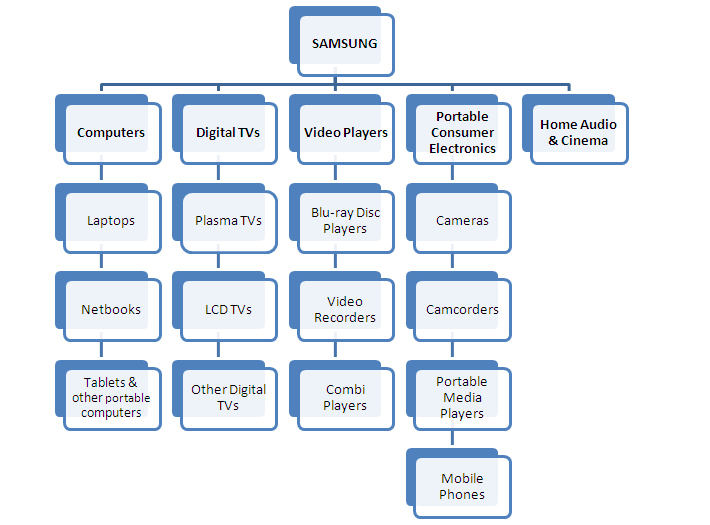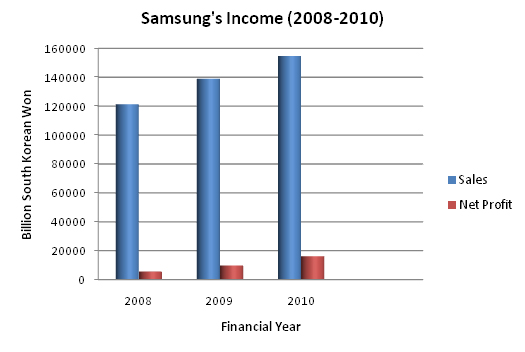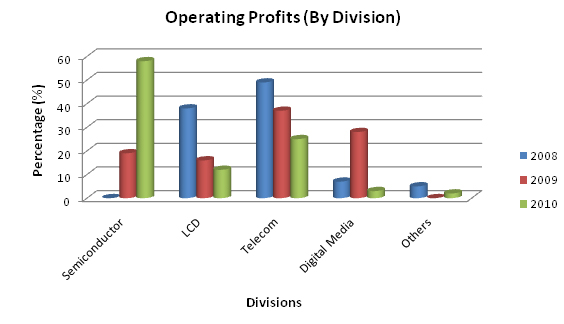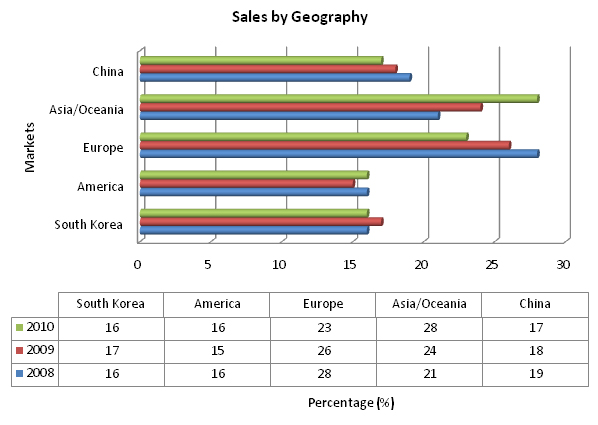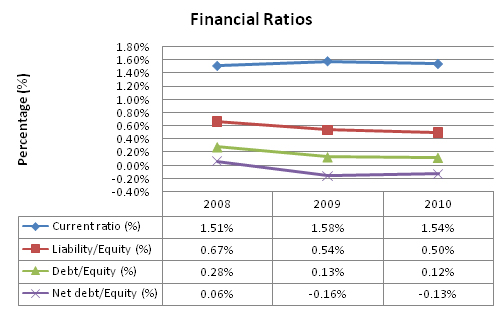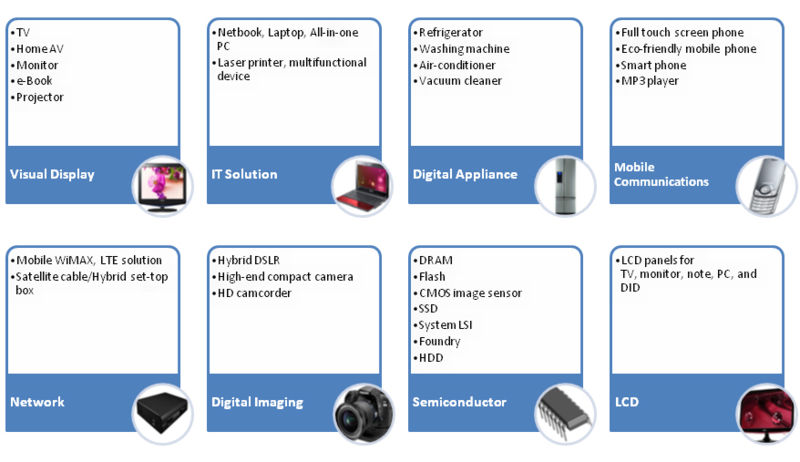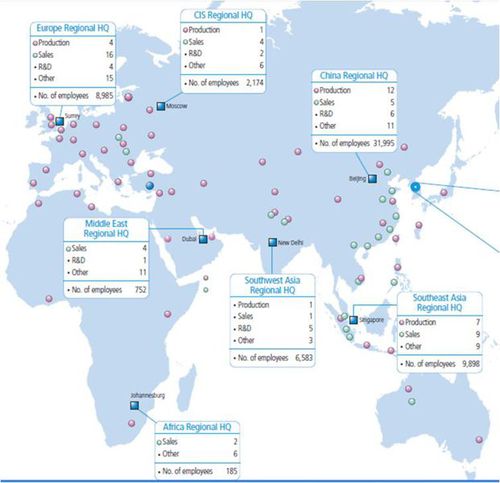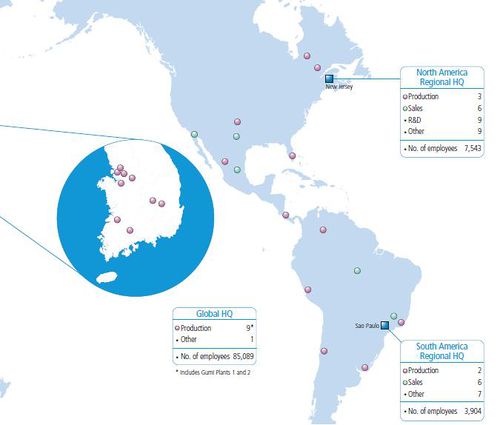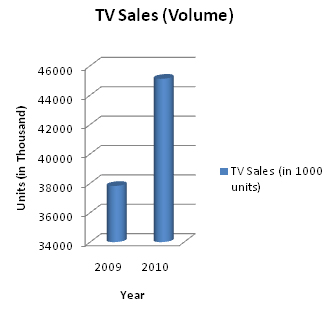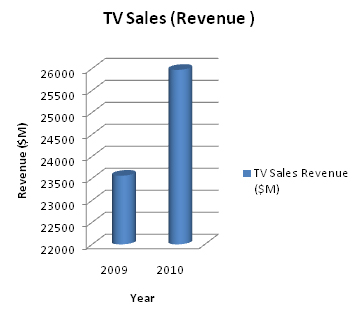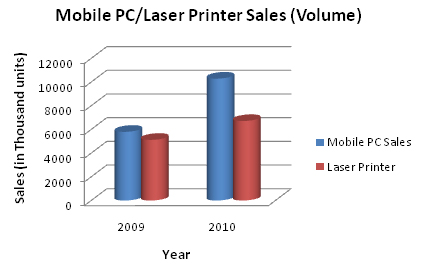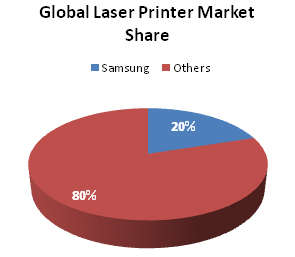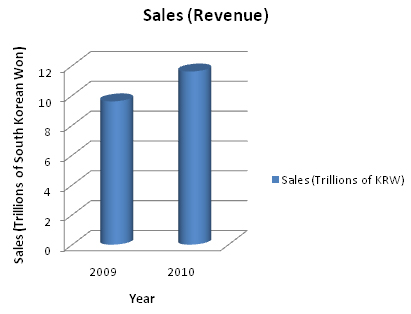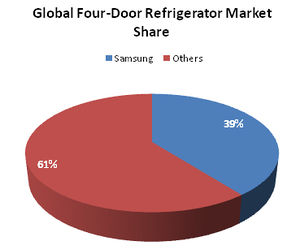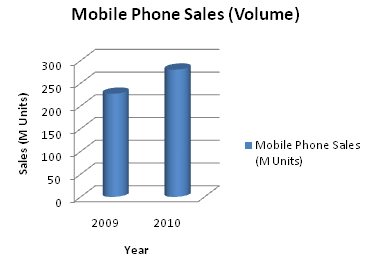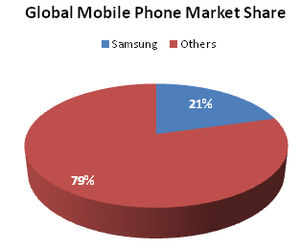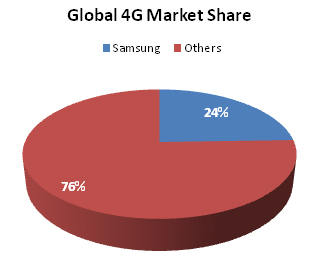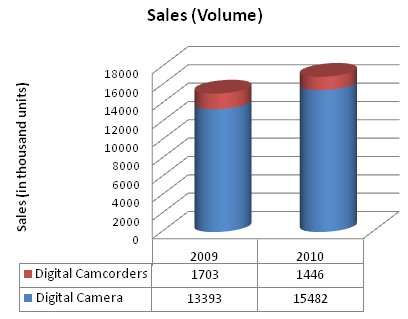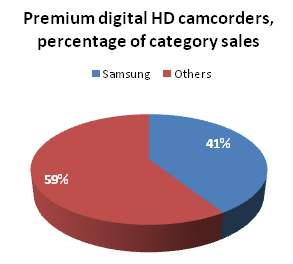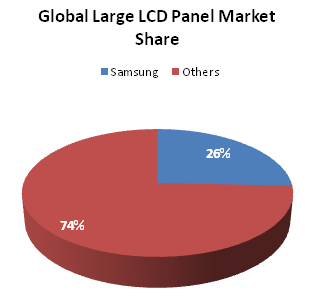Difference between revisions of "Samsung"
Amika.sethi (Talk | contribs) |
Amika.sethi (Talk | contribs) |
||
| (One intermediate revision by the same user not shown) | |||
| Line 1: | Line 1: | ||
| − | [ | + | [http://dolcera.com/wiki/index.php?title=LCD_Technology#Samsung_Company_Profile Back to LCD Technology] |
| + | <br/> | ||
===Company Overview=== | ===Company Overview=== | ||
| Line 178: | Line 179: | ||
* Vertically integrated – price optimization (high quality yet affordable) | * Vertically integrated – price optimization (high quality yet affordable) | ||
| + | <br/> | ||
| + | [http://dolcera.com/wiki/index.php?title=LCD_Technology#Samsung_Company_Profile Back to LCD Technology] | ||
| − | + | <br/> | |
Latest revision as of 03:11, 28 July 2011
Contents
[hide]Company Overview
Samsung Electronics, a global leader in consumer electronics, semiconductor, telecommunication, digital media and digital convergence technologies, is the world’s largest technology company based on revenue and one of the world’s top 20 brands. For more than 70 years, Samsung has been at the forefront of innovation. Their discoveries, inventions and breakthrough products have helped shape the history of the digital revolution.
The largest technology company in the world (based on annual sales), Samsung is guided by a simple philosophy, strong values and high ethical standards that influence our work. Samsung is composed of numerous international businesses, all united under the Samsung brand, including Samsung Electronics, Samsung Heavy Industries, one of the world’s largest shipbuilders, and Samsung Engineering & Construction, a major global construction company. These three multinationals form the core of Samsung Group and reflect its name - the meaning of the Korean word Samsung is "tristar" or "three stars". Samsung has 40 subsidiaries and offices in over 100 countries. In 2010, Samsung announced innovative products including 3D TVs, Galaxy S smartphones, and the Galaxy Tab.
| Type | Public Company |
| Company Size | 275,000 employees |
| Website | http://www.samsung.com |
| Industry | Electrical/Electronic Manufacturing |
| Founded | 1969 |
| Headquarters | Seoul, S.Korea |
| Regional involvement | Worldwide |
Specialties
Financial Overview
Samsung’s Income (2008-2011)
| Q4/2010 | Q4/2009 | %y-o-y | |
| Revenue | 41.9 | 39.2 | 6.7 |
| LCD Revenue | 7.2 | 7.3 | -1 |
| Telecom Revenue | 12.1 | 10.2 | 19 |
*figures in Won trillion
Although the company had a strong year in terms of revenue and income growth, Q4 results brought signs of a possibly difficult 2011.
Samsung’s digital media division, the unit in charge of the TV business, lost Won170 billion in Q4 2010, despite positive volume demand dynamics. Falling revenues and waning profits were largely due to declining prices brought on by intense price competition in LCD televisions. Strong demand for LED screens in the first half of 2010 drove up prices, leading to an oversupply in the second half, causing global prices to decline. In televisions, LED screens became mainstream over 2010, thus declining in price. Product lifecycle extensions like 3D TVs and internet-enabled TVs were non-factors in revenue generation in 2010. Demand for 3D TVs was limited, and internet-enabled TVs were just entering the market in late 2010.
Samsung Corp was much more successful in smartphones and related components. The telecommunications division had a record Won1.4 trillion operating profit in Q4 2010. This is largely due to the success of the Galaxy S series of Android-based smartphones. The company reports global sales of approximately 10 million units in 2010. However, significant challenges lie ahead as competitors like HTC Corp, Motorola Inc and LG Corp are focusing on Android-based phones to boost growth in 2011, making it likely that the market will be significantly more competitive with falling prices and margins.
Samsung Corp is the world’s largest manufacturer of NAND flash memory, demand for which surged towards the end of 2010 as the component is widely used in smartphones and portable computers, pushing up operating semiconductor profits to Won1.8 billion in 2010.
Divisional performance
Sales by Division
Profits by Division
- In consumer electronics, the company has been focused on digital televisions and mobile phones, where it is among the global market leaders; however, since 2008-2009, Samsung Corp has been working to expand its global presence in computers with laptops, netbooks and starting in 2010, in other portable computers (tablets).
- Digital cameras also became an area of expanded interest for the company in 2009 and into 2010, as it was working to capitalize on the growing popularity of compact interchangeable lens cameras (also known as mirror-less DSLR cameras).
- 2010 brought the company record revenues, as demand surged for NAND flash memory used in the manufacture of portable computers, mobile phones and other portable consumer electronics.
- While volume demand for LCD televisions and display panels remained strong in 2010, revenues were slowed by rapid price erosion which impacted the market in 2010.
Sales by Geography
Financial Ratios
Business Overview
Business Divisions
Geographical Presence
As of January 2010, Samsung Electronics has a total of 196 subsidiaries around the world including production subsidiaries, sales subsidiaries, distribution subsidiaries, and research laboratories. Our global network also includes one global headquarters in Korea and nine regional headquarters in North America, Europe, China, Southeast Asia, Southwest Asia, Latin America, CIS, Middle East, and Africa.
Organization Chart
Market Overview
Visual Display Business
Supported by vital technologies and inimitable design, Samsung Electronics has achieved the world’s No.1 market share in TVs for five years in a row since 2006. After establishing the new market for LED TVs in 2009, they have extended their competitive lead with sales of 45.11 million TVs, which includes 39.26 million flat panel TVs in 2010. Samsung launched Full HD 3D LED TV in 2010. With sales of 2 million 3D TVs, they are also leading the next-generation market. In 2011, they are launching smart TVs that feature Full HD picture quality, immersive viewing experience and Smart Hub options that make digital content more convenient and enjoyable for consumers.
IT Solutions Business
By implementing global marketing strategy for mobile PCs, Samsung Electronics realized rapid growth in 2010, reaching sales of 10 million units worldwide. Samsung launched a printer for consumers that supports mobile printing. They provided business customers with a complete product line, including the first dual core CPU-equipped printer on the market, a multifunction printer and an A3 copier. Easy-to-use features and powerful performance secured second global market share in the A4 laser printer category. Samsung led the world market in the categories of mono laser multifunction printers and color laser multifunction printers for the second consecutive year.
Digital Appliances Business
In 2010, Samsung’s innovative products garnered great response worldwide, including twin cooling side by-side refrigerator; the front loader washer with vibration-reduction technology and PowerFoamTM; energy-efficient air conditioner; and air purifiers with humidification that maintain clean air quality in rooms. Samsung’s smart appliances also deliver gracious and convenient lifestyle options. In 2011, Samsung maintains its market leadership by releasing additional premium appliances.
Mobile Communications Business
In 2010, Samsung Electronics reinforced its market leadership by achieving sales of 280 million mobile phones worldwide, up 23% over 2009 and a double-digit increase in operating profits. GALAXY S model posted sales of 10 million units, while the GALAXY Tab also led the Android tablet PC market, earning glowing customer reviews. Samsung’s leadership in full-touch and messaging mobile phones continued in both advanced and emerging markets. In 2011, Samsung plans to launch GALAXY S II, to emphasize their category leadership and provide readily available lineup options for global customers.
Telecommunication Systems Business
Advancing the rapidly growing market of next-generation wireless telecommunications systems, Samsung Electronics is setting standards by developing forward-looking products for two major 4G platforms, Long Term Evolution (LTE) and Mobile WiMAX (WiBRO). In 2010, Samsung established the first LTE commercial services network in the US and is now expanding in North America, Asia and Europe. Mobile WiMAX—introduced by Samsung Electronics and adopted as a global standard in 2007—has been experiencing dramatic growth in major mobile communications markets, including the US, Japan and Saudi Arabia.
Digital Imaging Business
In 2010, Samsung extended its line of interchangeable lens digital cameras by adding the world’s first i-Function feature. Samsung released mirrorless digital camera, the NX11, secured competitive lead over professional optical brands. Samsung also launched the ST700 DualView camera, which offers excellent image quality plus fun and convenient self-portrait options; the EX1, with the world’s first ultra-wide F1.8 zoom lens; the SH100, which features Wi-Fi (DLNA) functionality; and the HMX-Q10 digital camcorder, with the world’s first switch grip technology.
Semiconductor Business
Samsung’s product competitiveness has awarded it the No.1 position in the worldwide memory market for 18 years in a row. Samsung began the world’s first mass production of 30nm-class 2Gb DDR3 DRAM, 30nm-class 4Gb LPDDR2 DRAM, 20nm-class NAND flash memory, 512GB SSD and more. Its System LSI division reinforced its global stature with its 1GHz dual-core mobile application processor and as part of its more aggressive marketing efforts; Samsung launched the Exynos brand for application processor family. In addition, Samsung achieved the industry’s top market share in CMOS image sensors for mobile phones for two consecutive years. Samsung’s leadership in this area includes backside illumination sensor technology, which dramatically enhances the light sensitivity of a sensor. In the foundry sector, their industry’s first 32nm low-power logic process with high-k metal gate technology delivers optimized solutions for customers and demonstrates technology leadership in advanced technology nodes. In the storage systems division, Samsung added to our extensive product lineup by introducing high-capacity hard disk drives (HDDs) to the market, including a 2.5 inch 334GB HDD and a 3.5 inch 667GB HDD.
LCD Business
The industry leader, Samsung Electronics has achieved the No. 1 market share for LCD panels for nine consecutive years owing to our exceptional technology and product quality. Samsung’s industry-first Active 3D technology supports True 240Hz for 3D TV, which has reinforced its leadership. Samsung also released such trendsetting displays as an LCD panel for the tablet PC, which offers vivid colors at a wide viewing angle; a low-power IT panel built with advanced LED backlight technology; an exceptionally narrow bezel DID panel; and more. In 2011, it plans to improve its product leadership by developing, ultra-large panel technology, a full range of LED LCD panels, high-value IT products and DID panels.
SWOT Analysis of Samsung
| Strengths | Weakness |
| Mobile phones • Samsung Corp is the second largest manufacturer of mobile phones in the world by volume. The company has a wide product portfolio across all price ranges and enjoyed success in smartphones in 2009 and 2010. Televisions • Samsung Corp is the world’s leading manufacturer of digital televisions and while low-cost manufacturers like Vizio Inc have eroded its share in 2010, Samsung Corp’s early entry into LED TVs has ensured a strong performance for 2011. |
Computers • Despite its efforts to expand its dominance in portable computers outside of South Korea since 2009, Samsung Corp held a 3% global volume share in 2009 compared to 38% for South Korea in the same year. Home audio and cinema • Samsung Corp has not been able to translate its dominance in the global television market to home audio and cinema, which is led by Sony Corp and Panasonic Corp, while Samsung held less than 5% of the global market in 2009. |
| Opportunities | Threats |
| The connected home • Samsung’s presence in in-home consumer electronics, mobile phones and consumer appliances presents the company with a chance to capitalize on demand for inter-connectivity and related services in the above categories. OLED/AMOLED • As one of the largest video panel manufacturers in the world, Samsung Corp has the industrial power to accelerate the application of emerging screen technologies in portable computers, and expand its global presence in the category. |
Low-cost smartphone manufacturers • Samsung Corp has been successful with its line of smartphones in 2010 but it is facing growing competition from market leaders and low-cost brands, particularly in developing where low-cost brands have gained market share in 2010. Panasonic Corp and LG Group • The two electronics and appliance giants have struggled in 2008-2009, but after a round of reorganizations both are likely to mount aggressive comeback campaigns threatening Samsung Corp’s share across all product categories. |
Core competencies
1. R&D - Samsung provides high quality technology coupled with cutting-edge innovations
2. Patents - Samsung has many technology patents that gives it an edge over other companies
3. Diversified in terms of:
- Portfolio – Business comes from many units, not concentrated to one/two units, not affected by fluctuations in 1 or 2 units
- Geography – Samsung’s business is not concentrated in one geography, This increases their business stability
4. Core competencies in some of the businesses that Samsung is into:
- Latest mobile phone technology
- Semiconductor flash Memory - competitive cost-per-gigabyte
5. Technological capability, brand and design and high level of quality control
6. Supply Chain - One of the main characteristics of being a market leader is the speed to market of its products. Samsung Electronics has excelled in that regard by leveraging its manufacturing superiority and expertise in supply chain process
- Vertically integrated – price optimization (high quality yet affordable)
